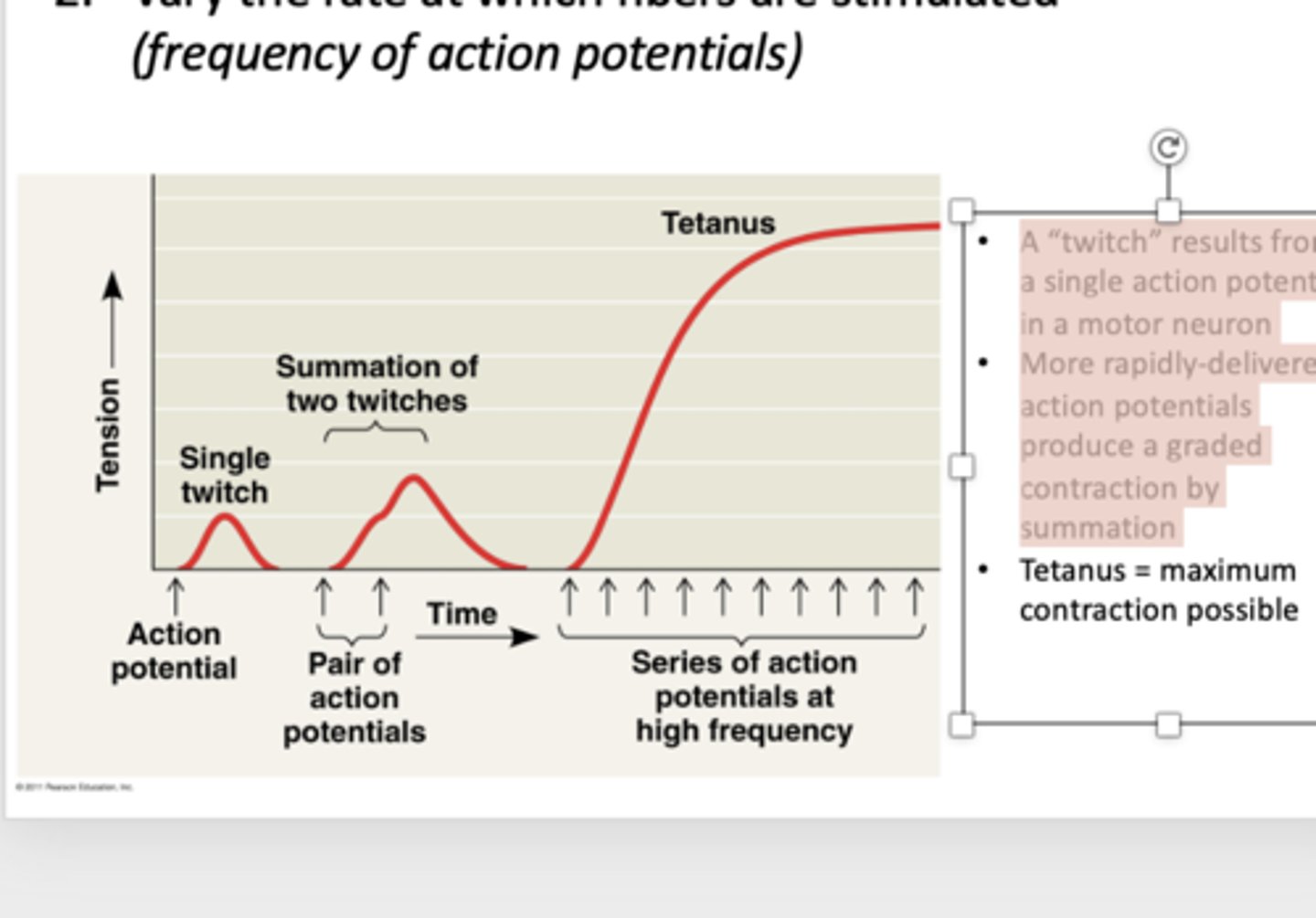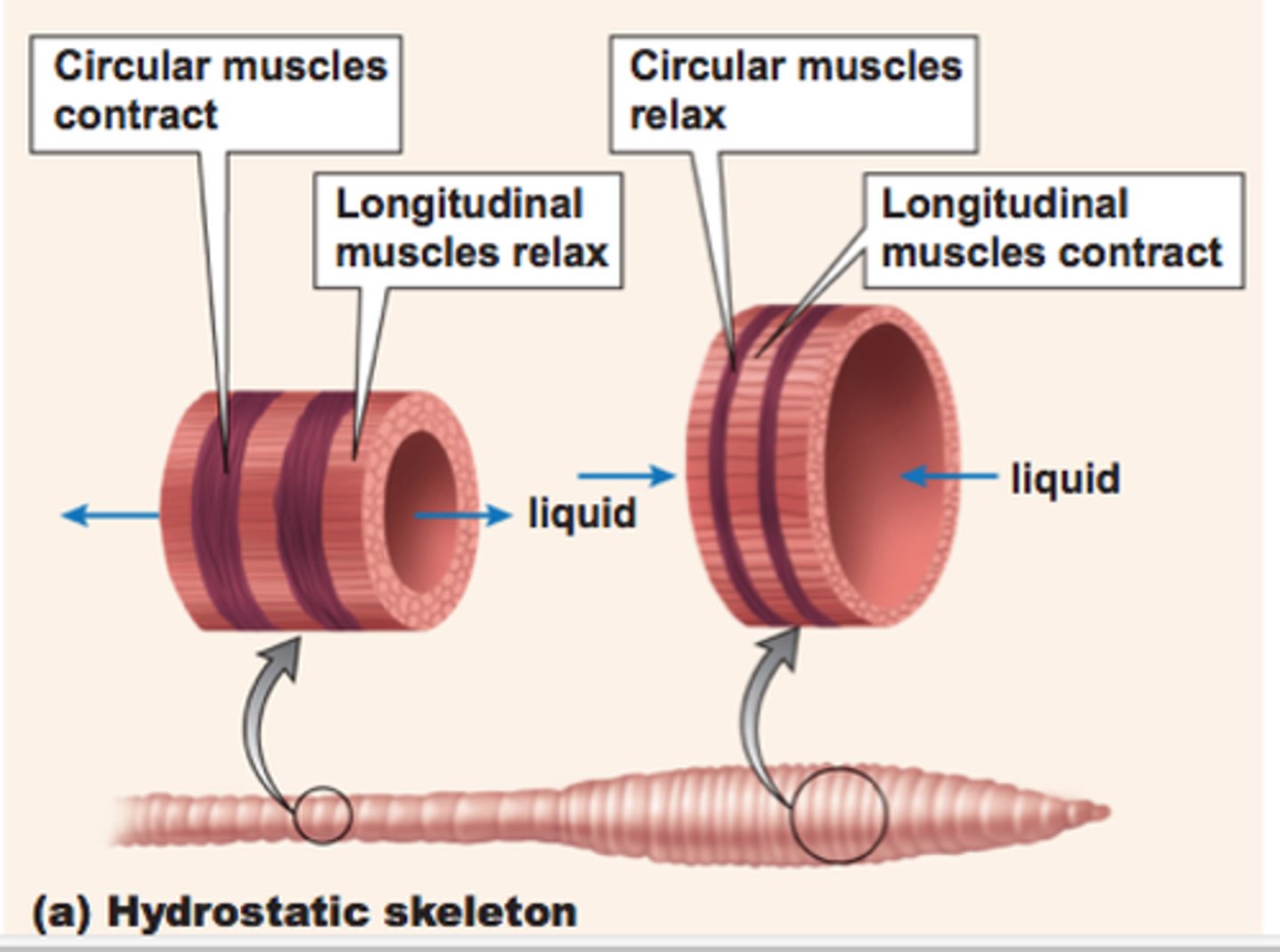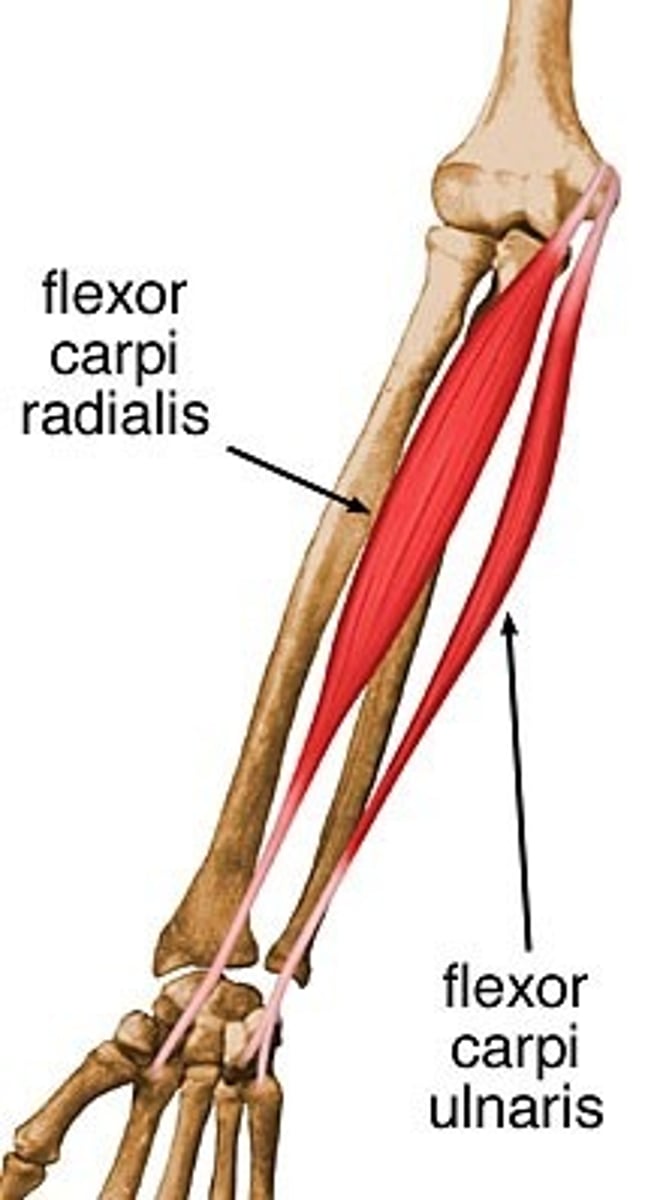1108 F24 4.01 Motor units and skeletal systems
1/34
There's no tags or description
Looks like no tags are added yet.
Name | Mastery | Learn | Test | Matching | Spaced |
|---|
No study sessions yet.
35 Terms
Muscle contractions are analog
Graded
Muscles require
antagonistic muscle groups
One muscle fiber =
one muscle cell (multinucleate)
Myofibril =
structure within muscle cell with repeating sarcomeres
Sarcomere
contractile unit; alternating light/dark units
A-C
one length of actin filament
B-D
One length of myosin
Two mechanisms for grading muscle contractions
number of cells that contract (number of active neurons) or cary the rate at which fibers are stimulated

A twitch results from a
a single action potential in a motor neuron
more rapidly delivered action potentials produce a graded contraction by
summation
Tetanus
maximum contraction possible
oxidative
oxidative phosphorylation generates ATP
oxidative phosphorylation
requires lots of mitochondria, requires lots of oxygen (myoglobin) = red, slow but comparatively inexhaustible source of ATP
glycolytic
glycolysis generates atp
glycolytic
less mitochondria needed, less oxygen needed = white, fast but rapidly exhausted source of ATP
fast twitch fibers; brief powerful contractions
glycolytic fewer mitochondria, rapid release, appear white due to low concentration of myoglobin (oxygen carrier) quick to fatigue; specialized for burst of activity
slow twitch fibers
oxidative, slower release and uptake of Ca2+, appear red due to high myoglobin conc, slow to fatigue, specialized for endurance
intermediate fibers- varying contractile properties
oxidative and glycolytic, appear pink to red, contractile properties carry, but are intermediate between fast and slow-twitch
hydrostatic skeleton is the main type of skeleton in
cnidarians, flatworms, nematodes, and annelids
exoskeleton is a
hard encasement deposited on the surface of an animal
hydrostatic skeleton consists of
fluid held under pressure in a closed body compartment.
exoskeletons are found in most
mollusks and arthopods
exoskeletons are not composed
of cells and so must be shed for the animal to grow
the exoskeleton constraints
the contraction size of the muscle
an exoskeleton consists of
hard support elements such as bones, buried in soft tissue
endoskeletons are found in
sponges, echinoderms, vertebrates/chordates
a mammalian skeleton has more than 200 bones
some bones are fused; others are connected at joints by ligaments that allow freedom of movement
antagonistic muscles in hydrostatic skeletons
-works by squeezing water, which moves the structure it surrounds
-longitudinal muscles run length of animal, circular muscles run circumference of animal
- longitudinal contracts while circular muscle relaxes and vice versa
- relaxed = stretched out. contracted = compressed
(think of movement as like an accordian)
found in invertebrates

flexor
contracts to bring two bones in an arc towards each other

extensor
contracts to straighten the bones out

antagonistic muscles in endoskeletons
found in sponges, starfish, and chordates
antagonistic muscles in exoskeletons
Found in arthopods and mollusks; same idea as in endoskeletons except not enough room for muscles to contract
Unlike the action potentials that control them, muscle contractions are graded (a muscle can be contracted fully, not at all, or some degree in between). How is this accomplished?
Vary the number of activated myosin motor proteins (thick filaments)
Vary the number of activated motor units
Vary the amount of calcium released by the sarcoplasmic reticulum
Vary the frequency of action potentials in the motor neuron
Vary the number of T tubules depolarized
Vary the size of the action potential in the efferent neuron
Vary the number of activated motor units
Vary the frequency of action potentials in the motor neuron
Compared to oxidative skeletal muscle fibers, those classified as glycolytic typically have _____.
more sensitivity to fatigue
a darker visual appearance
a higher density of mitochondria
a higher concentration of myoglobin
all of the above
none of the above
Fast-twitch - brief, rapid, powerful contractions
Glycolytic (fewer mitochondria)
Rapid release and uptake of Ca2+
Appear white due to low myoglobin concentration
Quick to fatigue; specialized for bursts of activity
Slow-twitch - long, sustained contractions
Oxidative (many mitochondria)
Slower release and uptake of Ca2+
Appear red due to high myoglobin concentration
Slow to fatigue; specialized for endurance
Muscles generate force for moving the body, and muscles are arranged in antagonistic pairs in animals with endoskeletons, exoskeletons, and hydrostatic skeletons. This statement is:
True for all skeleton types (endoskeleton, exoskeleton, hydrostatic skeleton)
True for endoskeletons and exoskeletons, but not hydrostatic skeletons
True for endoskeletons only
False: Muscles are never arranged in antagonistic pairs, as their actions would then cancel each other and no net movement results
True for all skeleton types (endoskeleton, exoskeleton, hydrostatic skeleton)